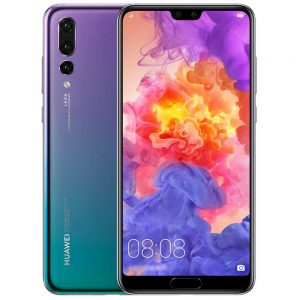
U.S. ban takes a toll on Huawei
By IHS Markit
Electronics Huawei Huawei IHS Markit IHS MarkitAmerican memory and storage suppliers also contend with immediate impacts according to IHS Markit
The Trump Administration’s move to bar Huawei from sourcing American technology has obvious ramifications for the Chinese technology giant, cutting it off from key suppliers and forcing it to seek sometimes scarce alternatives. However, the ban also carries severe ramifications for U.S.-based firms Micron and Western Digital, both of which do significant business with Huawei—suspending sales to one of the world’s largest buyers of memory chips and storage devices. 
The US Department of Commerce in May added Huawei to its Entity List, requiring the company to obtain a license to buy technology from American firms. This serves as an effective blacklist, preventing U.S. companies from selling to Huawei. Although the U.S. government has eased restrictions on Huawei, allowing existing client relationships to continue largely uninterrupted for 90 days, the ban already caused Micron and Western Digital to suspend sales to the Chinese company.
“The implications of the Huawei ban are quite serious for Micron and Western Digital,” said Michael Yang, research and analysis director at IHS Markit. “When you lose the world’s largest mobile infrastructure equipment supplier and the second-biggest smartphone maker as a customer, it’s going to have a major impact. Meanwhile, Huawei faces some touch challenges as well, including finding new sources for semiconductor memory devices, accelerating internal development plans and developing China-based manufacturing capabilities.”
Huawei ascends to prominence in key tech markets
Huawei in recent years has carved out prominent positions in the global smartphone and mobile infrastructure markets. In 2018, Huawei rose to take second place in the smartphone business, with 206.1 million shipments, according to the IHS Markit Smartphone Intelligence Service. This put it just slightly ahead of Apple, at 204.7 million. The company in 2017 became the leader in the worldwide mobile infrastructure equipment market, surpassing Ericsson. Huawei has retained the top position and rose to account for nearly one-third of the market, with a 31 percent share of global revenue in 2018, as reported by the IHS Markit Mobile Infrastructure Intelligence Service.
Huawei’s market position has translated directly into purchasing power, with the company ranking as the world’s fourth-largest OEM semiconductor buyer in 2018. The company spent $15.9 billion on semiconductors in 2018, according to the IHS Markit OEM Semiconductor Spending & Design Activity Intelligence Service. Memory represents a considerable slice of that spending, with the company buying $1.7 billion worth of DRAM and $1.1 billion worth of NAND flash memory for the year.
Micron and Western Digital feel immediate impact
Despite the 90-day ban respite, Micron and Western Digital have already ceased doing business with Huawei, according to sources. This event is having a major impact on the two U.S. companies’ direct sales. It also has affected their indirect sales, prompting the companies to ensure their wares aren’t incorporated into any products sold to Huawei by their customers.
This represents a major revenue loss for Micron and Western Digital, given that the wireless communications market where Huawei competes represents a major consumer of memory and storage products. In the memory business, the wireless communications market was the second-largest global market for DRAM in 2018, following computer platforms, with revenue of $21.3 billion. Wireless was also the second largest market for NAND flash memory after computers, with revenue of $14.6 billion in 2018.
Looking at the storage business, HDD and solid-state drive (SSD) products enjoy major usage in the enterprise segment where Huawei operates. The enterprise market generated 72.8 million HDD unit shipments in 2018, while SDD demand amounted to 34 million, according to the IHS Markit HDD and SDD Storage Intelligence Service. For Micron and Western Digital, the revenue lost because of the ban is not likely to be replaced easily or quickly.
Huawei faces storage supply struggles
For Huawei, the ramifications of the ban are expected to be long-lasting. Micron is an important player in the worldwide memory business, with the company ranking as the third-largest supplier of DRAM in 2018, with a 23.1 percent share of global revenue, according to the IHS Markit DRAM Memory Intelligence Service. The company came in fifth in NAND flash memory, with a 10.6 percent share, as reported by the IHS Markit NAND Memory Intelligence Service.
On the other hand, there are alternative sources for these parts, including larger overseas-based DRAM and NAND suppliers like Samsung, SK Hynix, Toshiba. Huawei is likely to face some interruption in supply but eventually should be able to line up new supplies from these sources.
However, the company will face a more difficult situation in storage as U.S.-based companies dominate the HDD market. Western Digital was the world’s second-largest HDD vendor in 2018, accounting for 37.3 percent of global HDD shipments in 2018. Fellow U.S. HDD supplier Seagate was in first place, with a 39.8 percent slice of shipments. Together, the two American companies controlled slightly more than 77 percent of the market.
For Huawei, this leaves only one possible source: number-three Toshiba, with just a 22.9 percent market share. Whether Toshiba can and will meet all of Huawei’s needs is an unanswered question.
No winners
While the ban was ostensibly designed to penalize Huawei and benefit the U.S. tech industry, the reality is the pain will be felt by companies on both sides of the Pacific, affecting key U.S. suppliers along with Huawei.
